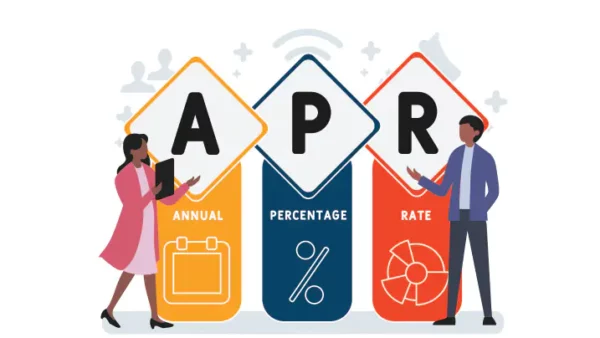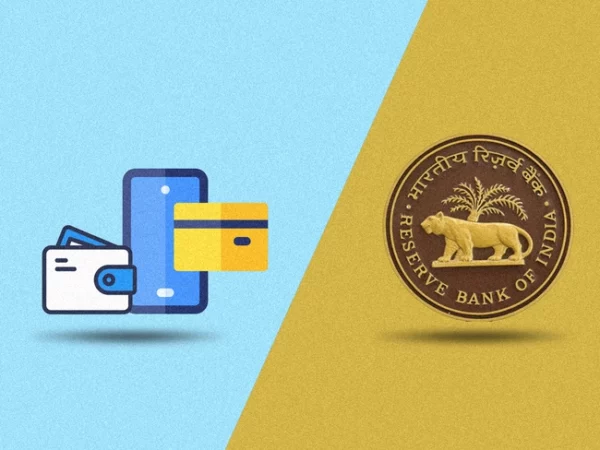Decoding RBI’s Digital Lending Guidelines From The Lens Of Fintech

Decoding RBI’s Digital Lending Guidelines From The Lens Of Fintech
The Reserve Bank of India (RBI) released the initial set of eagerly expected guidelines for online lending on August 10, 2022. The central bank has taken a position on important problems and clarified things like getting borrowers’ approval before raising credit limits and disbursing loans directly to their bank accounts, among other things.
Long ago, the process of developing the rules for the developing industry had started. After the RBI established a working group on “digital lending” to share a report completed in 11 months, the starting activity began in January 2022.
Most fintech founders, leaders, and analysts view the rules as a positive development because they finally recognise digital lending fintech as agents of banks or NBFCs and give them the legal right to operate.
Also, there are areas where the RBI is still seeking details. This includes:
- Scope of the financial literacy centres
- Centre for Financial Literacy
- Electronic Banking Awareness and Training Programmes (E-baat) to be expanded to include digital lending
- Baseline technology standards for digital lending apps
- Adoption of ethical AI by digital lenders, among others
According to Jupiter founder and CEO Jitendra Gupta, the guidelines would create chances for fintech companies to operate in the digital lending ecosystem, representing a $350 Billion market opportunity by the end of FY23.
The standards are anticipated to boost customer trust and risk appetite for innovative digital credit channels.
The RBI’s approval of the WGDL’s recommendations is seen positively by everyone in the fintech, financial services, and lending ecosystems, according to Irfan Mohammed, Chief Business Officer, Financial Services at Yubi. It provides the incumbents and stakeholders with the essential clarity and direction for planning and forwards motion.
Prepaid payment instruments (PPIs) cannot be loaded with credit lines, according to a notification the RBI issued in June for non-bank fintech participants. Although the PPI instrument should be backed by cash that a client owns, it was found that specific fintech employed it as a PPI backed by a third-party credit line.
Given that the guidelines expressly forbid the participation of third-party lending service providers (LSPs) through prepaid payment instruments (PPI) or escrow pool accounts, the publication of digital lending guidelines is seen as an additional step in establishing a strong regulatory framework for fintech regarding their function of co-branding with credit cards.
According to CASHe Vice Chairman & MD Joginder Rana, “along with financial and operational discipline, it (the guidelines) will help foster customer confidence in the digital lending ecosystem and increase their willingness to explore newer avenues, ultimately benefiting the larger objective of financial inclusivity for all”.
State Of Digital lending Ecosystem
The RBI has traditionally been in charge of guarding consumers’ interests in the financial services industry. According to the WGDL’s findings, up to 600 of the 1,100 loan apps that were made available to Indian Android users across 80 app shops were unlawful. These online lending platforms were found to have excessive interest rates, use unethical and obnoxious collection practices, and conduct their business opaquely.
Many fintech companies, including OneCard, Slice, Uni, Jupiter Edge, and Mobikwik, which had earlier discovered murky areas in the rules to begin developing digital lending products, were forced to halt or restructure their lending operations as a result of the central bank’s clarification on loading PPIs using credit lines.
What’s intriguing, though, is how the RBI has acknowledged fintechs’ importance to the lending sector. In India, lending has always been seen as the sole purview of regulated institutions like banks, NBFCs, and state-owned cooperative banks. Fintech businesses pushed for a decade to be a part of the elite group, but there were no defined guidelines.
The difference between the existing groupings of regulated and unregulated digital lenders is now very obvious in the RBI’s most recent recommendations. Under the new regulations, even unregulated businesses have been acknowledged as part of the digital lending ecosystem by LSPs (Lending Service Providers) and DLAs (Digital Lending Apps).
The DLAs include “mobile and web-based applications with a user interface that permit borrowing by a borrower from a digital lender,” the RBI added, providing further clarification. “Apps from REs (regulated entities) and LSPs that REs employ to extend any credit facilitation services will be included in DLAs”.

More Regulatory Pressure On Digital Lending Fintechs by RBI
Sanjay Kao, EVP APAC at Lentra, one of the top enterprise SaaS companies empowering lenders in the digital lending ecosystem, compared the country’s pre-release of RBI guidelines for digital lending to the early years of unit-linked insurance plans (ULIPs) when a lack of regulation led to unsavoury practices like charging exorbitant commissions and tarnished the industry. After being regulated, ULIPs were accepted as an investment vehicle, resulting in positive growth, he said.
Overall, it is anticipated that the rules by RBI will raise the regulatory pressure on fintech. Due to the concentration of power with regulated entities (REs), fintech will need to follow the rules and cooperate with the nation’s current lending infrastructure.
Here are some other vital regulatory impacts that fintech will have to consider and change its strategies accordingly.

No Breather For The Likes Of Mobikwik, Slice, Jupiter Edge
Without clear guidelines, fintech is tied up with banks and NBFCs as third-party credit lines. It led to the emergence of three key groups, i.e.:
- Fintech + banks (OneCard – credit card);
- Fintech + NBFCs + bank (Slice, Uni – prepaid card);
- Fintech + non-bank PPI + bank (Jupiter Edge – prepaid card)
However, all loan disbursals and repayments must be carried out in accordance with the regulations for digital lending only between the accounts of the borrowers and the regulated Entity (REs), without the involvement of the LSPs pool account or any other third party.
It contradicts other business models because payments are always made into the borrower’s bank account.
According to Jupiter’s Gupta, a third party (fintech) is not allowed because they are not allowed to operate funds under the rules set down by the central bank; but the money must come directly from the bank or NBFC.
According to experts, this would develop novel banking solutions, with fintech collaborating with banks and NBFCs for tasks like loan underwriting, disbursement, and collection.

BNPL Also Comes Under Regulation
The WGDL suggested that the RBI accept new digital lending products like buy now pay later (BNPL) as a kind of lending, if not operational credit provided to retailers. “REs shall ensure that LSPs, if any, linked with such delayed payment credit products shall abide by the present outsourcing rules established by the Bank,” said the guidelines.
This suggests that fintech companies involved in the microcredit market, such ZestMoney and LazyPay, will have the chance to continue and expand in the loan market while remaining inside the regulatory framework.
The new regulations mandate that REs, regardless of the type or duration of any credit obtained through DLAs (either of the RE or the LSP retained by RE), report such lending to Credit Information Companies (CICs).
The REs will be needed to report to CICs any new digital lending products they issue to merchant platforms that involve short-term credit or deferred payments.
All short-term/BNPL loans would now be viewed like loans and necessitate adhering to KYC requirements in addition to bureau reporting. As there would be stricter controls on money movement and bureau reporting, even for products like small-ticket BNPL loans, this could impact user experience.

APR To Change Micro Credit Lending Game
The REs must provide an upfront disclosure of the total cost of digital loans expressed as an Annual Percentage Rate (APR). The APR must be based on an all-inclusive cost and margin that considers the cost of money, the cost of credit, operational costs, processing fees, verification fees, maintenance fees, and other costs – except unforeseen fees like late payment fees and penalty fees.
The Key Fact Statement (KFS) will force the fintech to disclose the APR to the borrowers upfront. Sameer Singh Jaini, founder and CEO of The Digital Fifth, in a LinkedIn post, said this is likely to negatively impact fintech that provides small ticket/short-term loans.
These fintech rely on processing fees and “Flat Rate on Principal instead of Reducing Balance” and may charge upwards of 30% and, in some cases, more than 50% on an APR basis.

Stringent Data regulations
The standards state that the information gathered by DLAs must be based on a borrower’s specific prior consent, have a clear audit trail, and be need-based.
The rules state that the DLAs must give borrowers a choice to accept or reject their approval for the use of specific data, the option to revoke earlier granted consent, and the opportunity to remove the data the DLAs/LSPs have gathered from borrowers.
The following are the primary considerations for fintech going forward:
• REs should ensure that any LSPs they use store no borrower personal information other than the bare minimum (viz. name, address, contact details of the customer, etc.).
• DLAs should avoid accessing mobile phone resources, including files and media, contacts, call logs, telephony features, etc., in any case.
• No biometric data should be stored/ collected in the systems associated with the DLA of REs/ their LSPs unless allowed under existing statutory guidelines.
• A one-time access can be taken for the camera, microphone, location, or any other facility necessary for onboarding/ KYC requirements only with the borrower’s explicit consent.
• DLAs should clearly state the key information, like data needed in the process, its storage, outsourcing, and purging in their privacy policies, which should be clearly reflected on loan providers’ websites.
• REs should ensure that all data is stored on servers located in India while following statutory obligations/regulatory instructions.

Increase In Costs Of Operation
The guidelines say that lenders, not borrowers, must pay fees, levies, etc., that are due to fintech during the credit intermediation process. The borrower must be granted a cooling-off period of at least 90 days.
According to Swapnil Bhaskar, Head of Strategy at Niyo, while the regulated entities must comply with minor changes, the directive mandates compliance with changes like updating the app, which will increase costs for some businesses and result in an increase in tech and security costs for fintech.
Additionally, REs must ensure that they and the LSPs they have hired have a suitable nodal grievance redressal officer to handle complaints relating to fintech and digital lending. Fintechs will incur higher costs as a result of this.
NBFCs and lenders engaged in co-lending are experiencing challenges. According to RBI, recommendations for the First Loss Default Guarantee (FLDG) are being examined. But for now, the regulated digital lending entities must adhere to Master Direction – Reserve Bank of India (Securitisation of Standard Assets) Directions, 2021. This means that the originators should conform to the Minimum Retention Requirement (MRR) of
5% of the book value of the loans being securitised for underlying loans with an original maturity of 24 months or less
10% of the book value of the loans being securitised for underlying loans with an original maturity of more than 24 months and loans with bullet (lump-sum) repayments
“Because of RBI’s regulations governing First Loss Default Guarantee(FLDG), anyone who has been engaging in co-lending is in danger. The RBI has imposed a 15% FLDG guarantee on a loan of Rs 100. The NBFCs maintained a 2.25% capital as FLDG while making loans to their partner lenders, lending Rs 15 at 15%. Everyone is wondering why you suddenly need to keep a six times more FLDG,” said one of the executives from a leading NBFC.

Digital Lending: The Way Forward
Fintechs will need to actively collaborate with regulators and develop solutions within the regulatory framework to take advantage of the potential presented by the digital lending guidelines’ acknowledgement of their contribution to the lending industry. In return, regulators must assist fintech in adapting to the rules and fostering innovation while safeguarding customers’ interests.
Additionally, fintech must set up sufficient and open risk management controls. This will increase their market acceptance and consumer confidence while giving them the financial stability they need to prosper in a more regulated business environment.
Monish Anand, the CEO and founder of MyShubhLife, claims that digital lending will no longer be just a technology-driven convenience model but will instead develop into a multi-layered system that is based on the fundamentals of banking, prioritises the needs of the customer, and makes organised credit more accessible while increasing transparency.
Additionally, the fintech hopes that the RBI will now place more faith in them. Fintechs have established their legitimacy when it comes to tying credit cards to UPI, according to Ranvir Singh, founder and MD of Ring, who anticipates that RBI will allow NBFCs to issue their credit cards without the necessity for a co-branding partner bank. Only two NBFCs are now allowed to issue credit cards: the SBI Card and the Bank of Baroda (BoB) Card.
The new set of guidelines for First Loss Default Guarantee (FLDG) and the framework for web-aggregators of loan products are being anxiously awaited by the fintech world. To stop fraud and provide another code of conduct layer, the RBI plans to establish a self-regulatory organisation covering regulated entities (REs) and DLAs/LSPs in the digital lending ecosystem.
Edited by Prakriti Arora








